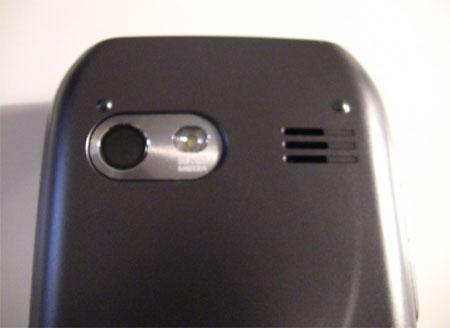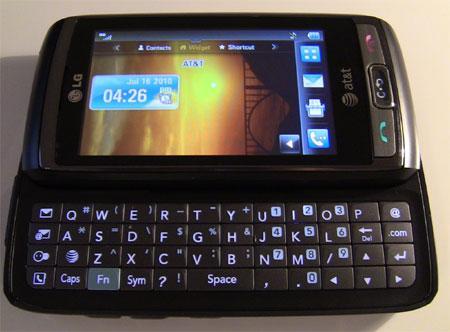The LG Vu Plus comes as the successor to the LG Vu, the "Plus" apparently standing for the physical keyboard that the original Vu lacked. I've had it for about a day and my overall first impressions are somewhat mixed. On the one hand, I like the design of the phone, I like the fact that it has a 3 megapixel camera with a flash, and I'm digging the phone's user interface. On the other hand, the touchscreen has given me a few problems, I'm not too fond of the physical keyboard, and the 950 mAh battery seems a little underpowered to me. Then again, the LG Sentio was powered by a 900 mAh battery it lasted a week on standby.

The Vu Plus ships with a battery, charger, and Interactive Tutorial CD. There is no data cable so I'll have to see what method to use to get music onto the phone. The device is is 4.31-inches tall, 2.31-inches wide, .6 inches thick, and weighs about 4 ounces. When I first held it, it felt a little light and hollow, but since then I've gotten used to it. It's not quite as solid-feeling as other phones, but it feels like it has some good support built into its frame. (It's also covered in protective tape that takes forever to get off.)
The front of the device has three physical buttons for talk and send, back, and end and power. The screen is a 3-nch LCD screen with a resolution of 240 x 400. It is a capacitive touchscreen, which caught me by surprise since you really don't see a capacitive touchscreen on most featurephones these days. So far, it hasn't been up to par with other capacitive touchscreens, but I'll have to see if performance improves as I get used to it. On the right side of the device is the camera button, screen lock/unlock button, and the microSD card slot. The phone supports up to 16 GB of memory with a microSD card. The top of the device is where you'll find the microUSB charging and headset port and the left side contains the volume rocker buttons and the task menu button.

The camera on the Vu Plus is a 3 MP camera with autofocus, digital zoom, and an LED flash. The phone also captures video in QVGA format with a resolution of 320 x 240 pixels. The Vu Plus has a music player, support for mobile e-mail, AT&T navigator, downloadable apps, mobile TV, and a web browser. Obviously, one of the big features is the physical keyboard. From the limited amount of time I've used it, I can say that the keys are a bit more firm than I would prefer and are kind of slippery. It is a full four-row keyboard with navigational arrows. Because the keys are bit a hard to press, it so far isn't the best keyboard I've used, but I'll test it out more throughout the next few days and see if I get used to it.

So right now, I'm on the fence with the LG Vu Plus. It has a lot of potential, so we'll see if LG did a good job with this messaging device. Check back for my full review or check out the Vu Plus at any AT&T store.